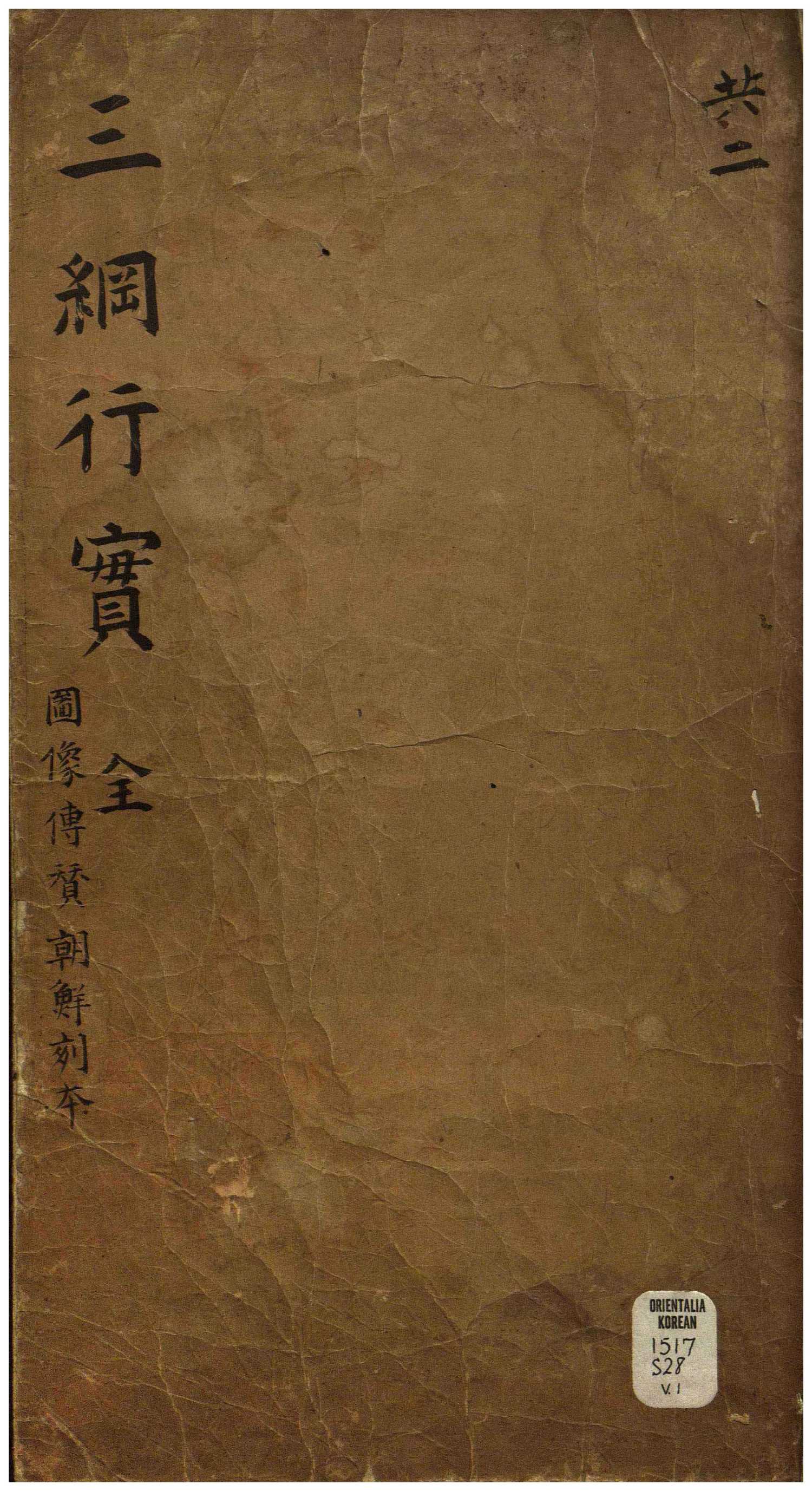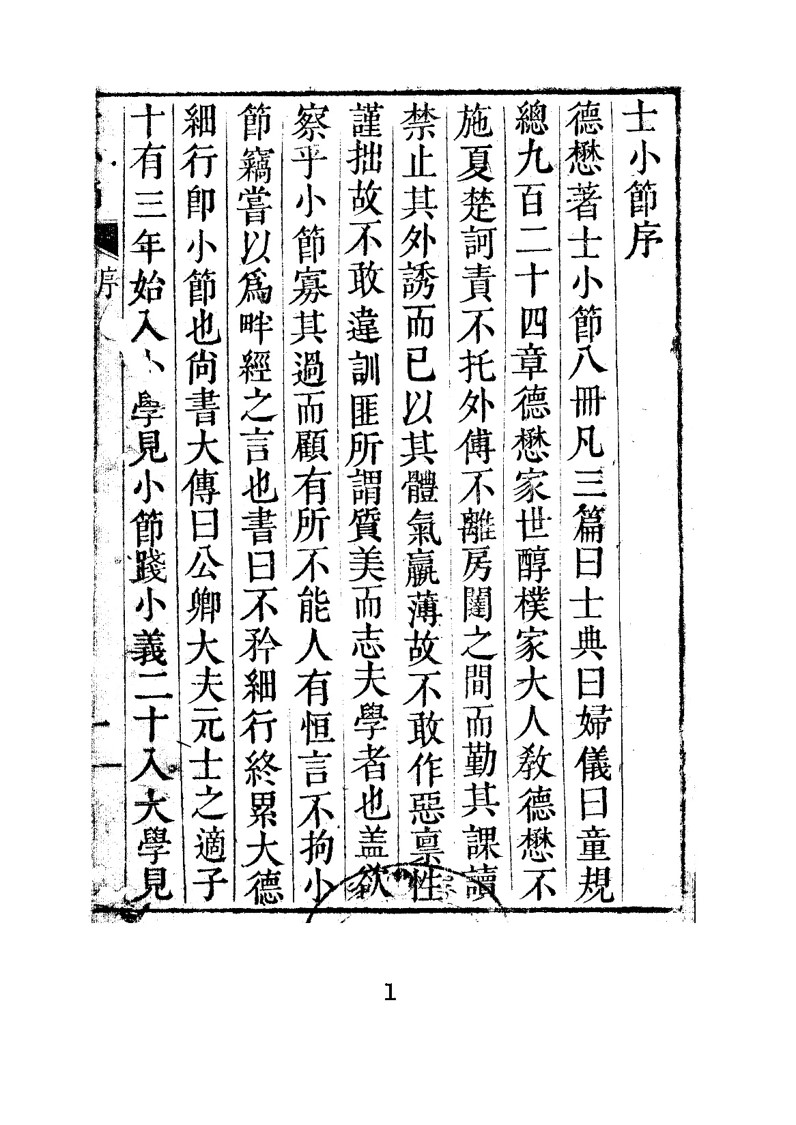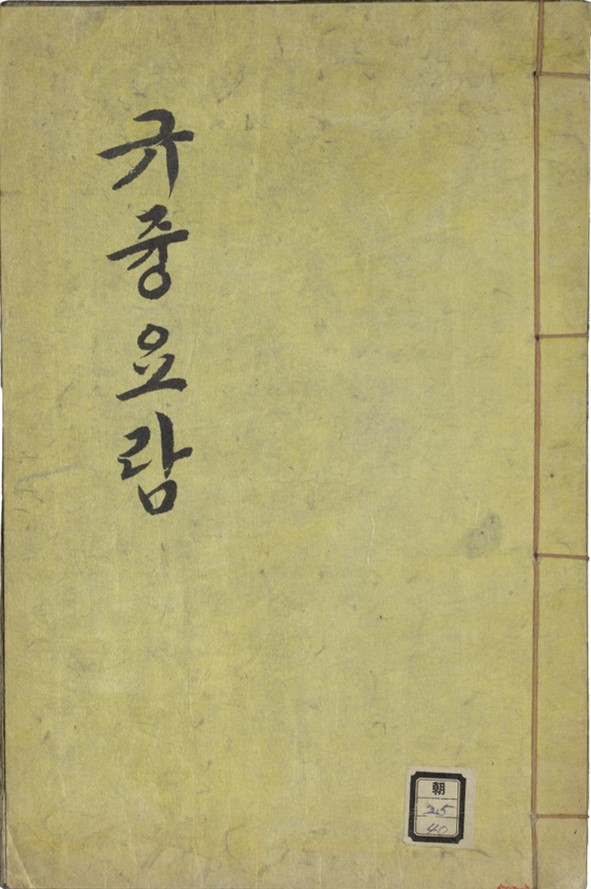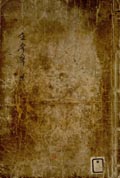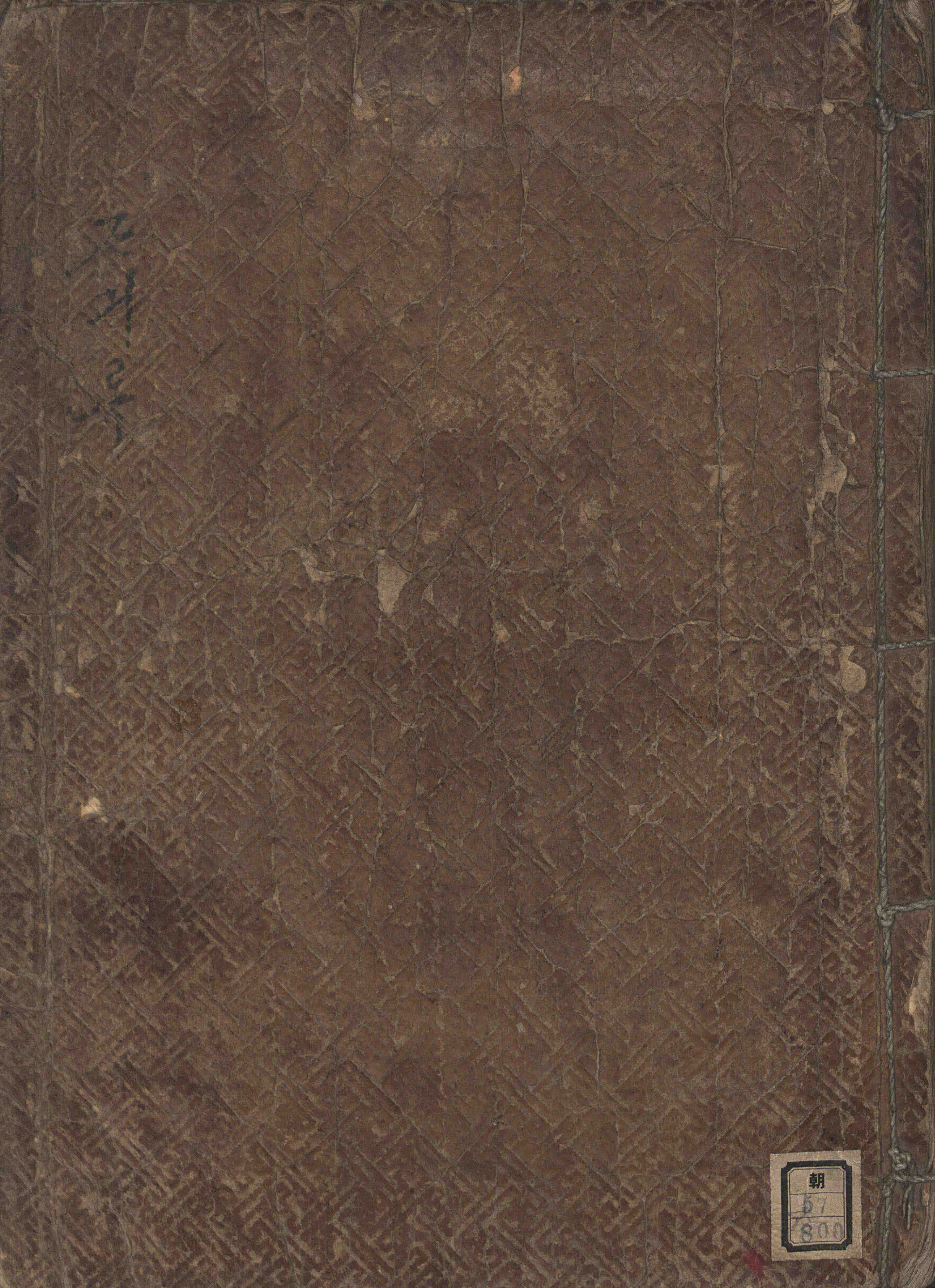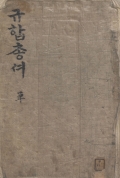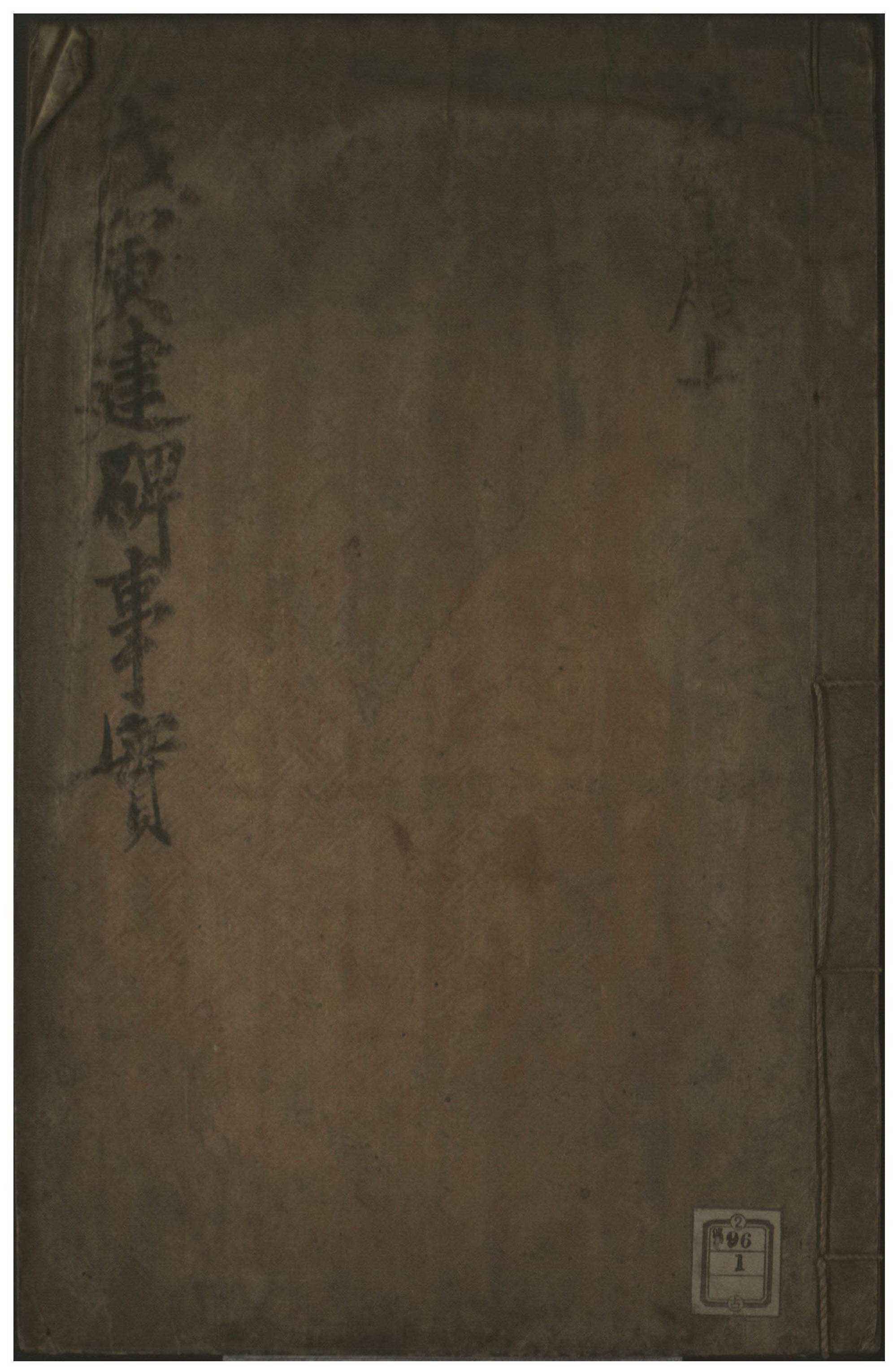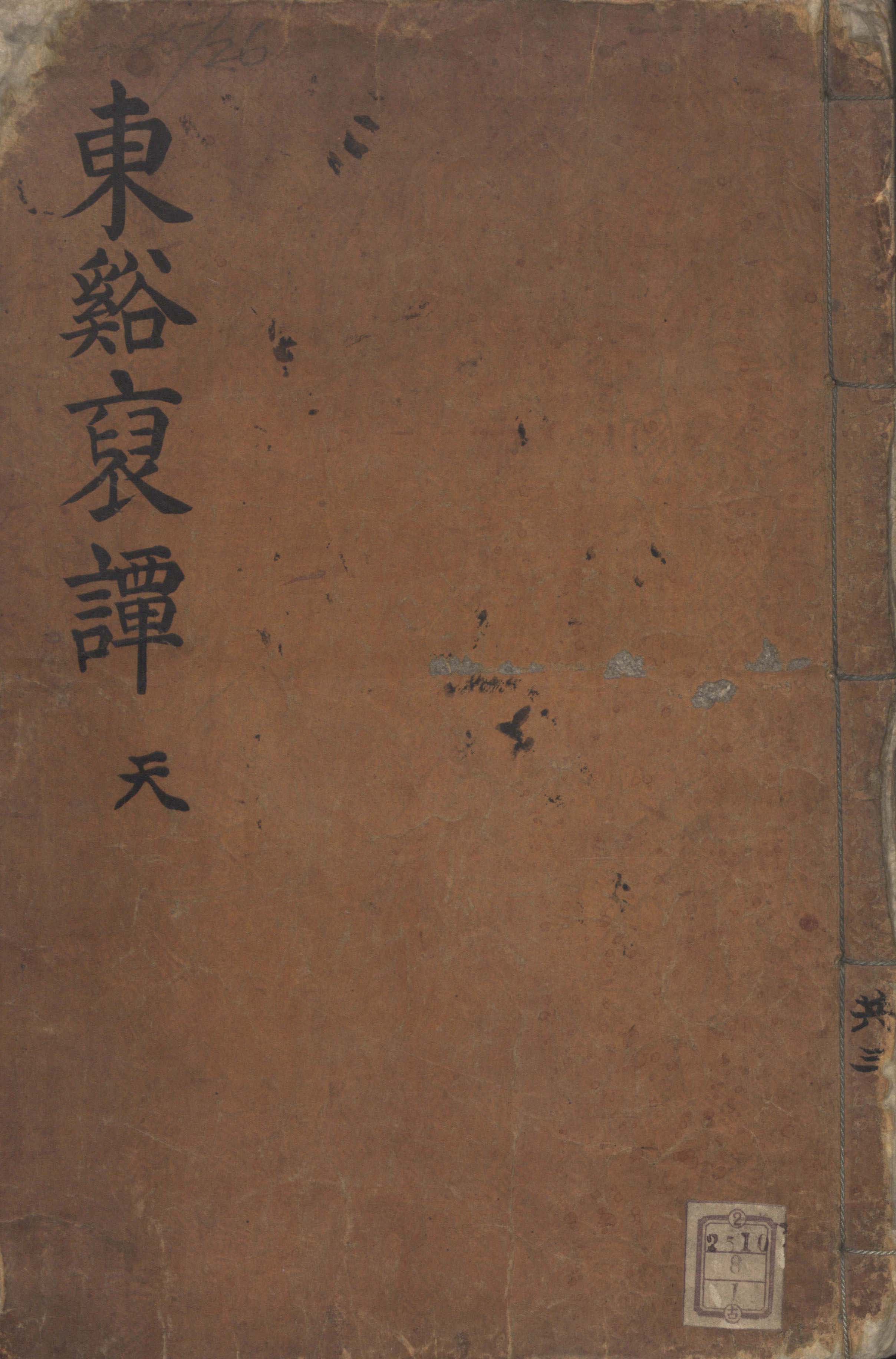East Asia Digital Library
Women in the Joseon era
Title
Three Fundamentals to Human Relationships and Conduct


Title : 三綱行實圖
Creator : 설순
Publisher : [刊寫者未詳]
Sasojeol


Title : 士小節
Creator : 李德懋, 이덕무, 崔惺煥, 최성환
Publisher : [刊寫者未詳]
Issued : 1775
URI : eadl:DM-NLKKOL000013428
Taegyoshingi (Record on New Prenatal Education)


Title : 胎敎新記章句大全: 附錄諺解
Creator : 李師朱堂, 이사주당
Publisher : 蔡漢作方
Issued : 1938
URI : eadl:DM-NLKKOL000015826
Naehoon


Title : 內訓
Creator : 昭惠王后 編, 인수대비
Publisher : [刊寫者未詳]
Issued : 1736
URI : eadl:DM-NLKKOL000020059
Sam-Eui-Dang’s Works


Title : 三宜堂稿
Creator : 金三宜堂(女) 著; 鄭廻澤 編
Publisher : 丁日燮家
Issued : 1933
URI : eadl:DM-NLKKOL000020510
Sosurok


Title : 소수록
Creator : [編者未詳]
Publisher : [刊寫者未詳]
Issued : 1834
URI : eadl:DM-NLKKOL000022702
Record on Myself


Title : 자긔록
Creator : 풍양조씨부인, 김기화부인
Publisher : [刊寫者未詳]
URI : eadl:DM-NLKKOL000023206
Gyuhapchongseo


Title : 규합총셔
Creator : 빙허각 이씨(朝鮮) 著
Publisher : [刊寫者未詳]
URI : eadl:DM-NLKKOL000025643
Ok-Bong Anthology, Appendix to Galimsego


Title : 嘉林世稿
Creator : 趙瑗(朝鮮), 玉峰(朝鮮) 共著, 趙希逸(朝鮮), 趙錫馨(朝鮮)
Publisher : [刊寫者未詳]
Issued : 1704
URI : eadl:DM-NLKKOL000026218
Yoon-Ji-Dang’s Posthumous Works


Title : 允摯堂遺稿
Creator : 任允摯堂 著, 임윤지당
Publisher : [刊寫者未詳]
Issued : 1796
URI : eadl:DM-NLKKOL000026299
Jeong-Il-Dang’s Posthumous Works


Title : 靜一堂遺稿
Creator : 姜靜一堂 著, 강정일당
Publisher : [刊寫者未詳]
Issued : 1835
URI : eadl:DM-NLKKOL000027379
Transcription of Queen Inyeol Epitaph


Title : 仁烈王後碑閣謄錄
Publisher : [刊寫者未詳]
URI : eadl:DM-NLKKOL000028838
The Memoires of Lady Hyegyong.


Title : 혜경궁읍혈녹
Creator : 惠慶宮 洪氏 著
Publisher : [刊寫者未詳]
URI : eadl:DM-NLKKOL000029735
Anthology of Nan-Sol-Heon


Title : 蘭雪軒集
Creator : 許蘭雪軒 著, 허난설헌, 許筠 編, 허균
Publisher : [刊寫者未詳]
URI : eadl:DM-NLKKOL000030051
Revised Prohibition on Gache


Title : 加髢申禁事目
Creator : 正祖 撰, 정조
Publisher : [發行處不明]
Issued : 1788
URI : eadl:DM-NLKKOL000031059
King’s Document on Bestowment of Jeongbuin Title to Ms. Han, Oh, Gil’s Wife


Title : 敎旨
Creator : 현종
Publisher : 顯宗 發給
Issued : 1661
URI : eadl:DM-NLKKOL000036312
Women in the Joseon era

- Title
- Women in the Joseon era(en) , 조선시대 여성(ko)
- Abstract
- Women were distanced from their family after marriage as a husband’s living with his wife’s family was replaced by a wife’s living with her husband’s family.
Yet instead, a woman obtained her status at her new family as the one who manages her family. Her right as a daughter was contracted, yet her status as a wife was cemented. Women were responsible for managing her family’s finance, and there were even women who accumulated large fortune and donated it to their community.
One of the starkest difference between Joseon and Goryeo from women’s perspective was government-led education for women. The Joseon government distributed textbook for women written in Hangeul to encourage behaviors and manners considered desired for and expected of women. This reinforced Confucian-inspired norms on women.
And yet, transformation always comes along as history takes an unexpected turn. The government-led education drive helped women to learn Hangeul, Korea’s letter. Hangeul, easy to learn and write, ended women’s illiteracy. Reading books, which started from textbook for women, evolved all the way to writing, and it encouraged some women to learn Chinse letter and literature. What was intended to educate, rather, remodel women caused women to possess knowledge, in the end.
From this collection, you can explore lives of women and atmosphere across the country during the Joseon dynasty.(en)
'남자는 하늘, 여자는 땅', ‘암탉이 울면 집안이 망한다’, 출가외인으로 표현되는 남성 중심의 사회, 여성에게는 정절을 요구하면서도 첩에 대해서는 관대한 나라, 여성의 정절을 목숨보다 소중히 여기는 사회 분위기에서 여성은 지엽적인 존재다. 하지만 이것은 조선의 여성을 설명할 수 있는 일부일 뿐 전부는 아니다. 무엇보다도 여성 관련 자료들을 보면 볼수록 출가외인이라는 말은 틀린 말 같다. 과부가 된 딸과 며느리에 대한 호혜와 배려도 상당히 깊은 걸 알 수 있다. 조선 왕조의 혼인 형태는 일부일처제이며, 가정에서 남편과 아버지의 권위가 높았다. 조선 전기에는 딸의 권리가 살아 있어 혼인 뒤에도 남자형제들과 균등하게 재산을 나눠받았다. 그러다가 1700년대 중반 이후 여성에게 나눠주는 재산 몫이 점점 줄어들었다. 또 혼인 뒤 처가살이의 전통이 사라지고, 여성이 시집으로 들어가는 ‘시집살이’가 자리 잡으면서 친정으로부터 멀어졌다. 그 대신 여성은 한 가정의 운영자로서 중심적인 지위를 확보하였다. 딸로서의 권리는 축소되었으나 가정에서 부인으로서의 위치가 튼튼해졌다. 여성은 가정 경제를 운영하는 책임자였으며, 큰돈을 모아 지역사회에 기부하는 여성도 생겨났다. 무엇보다도 여성 입장에서 조선 왕조는 고려 왕조와 크게 다른 점이 있었다. 바로 국가에서 시행한 여성 교육이었다. 국가에서는 여성이 힘써야 할 행동거지를 권장하기 위해 한글로 된 여성교훈서를 보급했다. 이 과정에서 유교에 입각한 여성 규범도 강화시켰다. 하지만 역사에서 변혁은 늘 뜻하지 않은 지점에서 발생한다. 정부에서 추진한 이 정책은 여성에게 한글이라는 문자를 안겨줬다. 배우기 쉽고 쓰기 쉬운 한글은 여성을 문맹에서 벗어나게 했다. 여성 교훈서에서 시작한 책읽기는 자연스럽게 글쓰기로 발전했고, 한문까지 익히는 여성들도 생겨났다. 여성에 대한 교육=교화 사업이 결과적으로 여성들에게 ‘지식’을 갖게 한 것이다. 소장 자료를 통해 조선시대 여성들의 삶과 국가적 분위기를 알아볼 수 있다.(ko)









